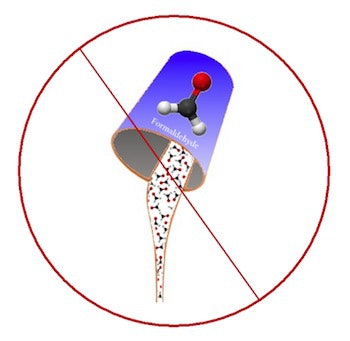

See, as we discussed a long long time ago, you have two ways to look at formaldehyde in composite wood products: content and emissions. For content, the question is, “What did you put in?” (And please, will people stop calling me up asking for a formaldehyde-free floor or, worse yet, will companies please stop advertising a formaldehyde-free floor? There’s no such thing: Formaldehyde is everywhere! You yourself are filled with formaldehyde. What you want to talk about is a no ADDED formaldehyde floor. Which isn’t really that meaningful, either, but at least is technically accurate. After all, you … but sorry, wait, I’ve digressed. We’ve clearly hit a nerve here … apologies. Where was I? Ah, yes…) For emissions, obviously, the question is, “What is coming out?”
As you all know, LEED redoes its program every few years. I am still trying to figure out the new v4, which is radically different in structure from the previous versions. (I’ll try to have some blogs on that out by the end of the year.) But one thing I see that it has done is remove the category for NAUF. Now flooring needs to be certified to CA Section 01350 to contribute, which makes more sense across the board—it’s more of a TVOC qualifier (looking at many (Total) VOCs, not just formaldehyde) and it’s focused on what the floor is emitting, not what went in.
As a manufacturer/distributor, I loved the old EQ4.4, where composite wood products produced as NAUF could contribute.
As a manufacturer/distributor, I loved the old EQ4.4, where composite wood products produced as NAUF could contribute. First, it assumed innocence: It was a self-certification category. We could state that the product was NAUF, and they believed us. None of this "guilty until proven innocent"—no, we were trusted. Loved that. Also, it was, frankly, pretty easy to have a lot of products eligible to contribute in that category. These days, almost any plywood-core flooring is made with phenol formaldehyde rather than urea, so we had a huge range of products that were eligible for consideration. That was great, too.
But from a scientific point of view? From a “Let’s be meaningful in our standards” point of view? Well, the NAUF (or really any content-based standard) isn’t nearly as appropriate as an emissions-based standard. It should matter a whole lot less what goes in than what comes out, right? So I have to say as much as I mourn the change from a sales perspective, I am glad to see we’re focused now more on what’s actually going to impact the homeowner.
I have always felt that most marketing of NAUF or NAF (No Added Formaldehyde of any type) have really been more about selling fear then selling health. So while I’m not a fan of applying Section 01350 to wood and wish we had a more appropriate air quality standard for our wood industry, I’m still glad to see LEED and the green market moving more to the concept of looking at emissions over content.
Goodbye, NAUF. I’ll miss you. But while you were always easy to market, you’re just not that meaningful…
































